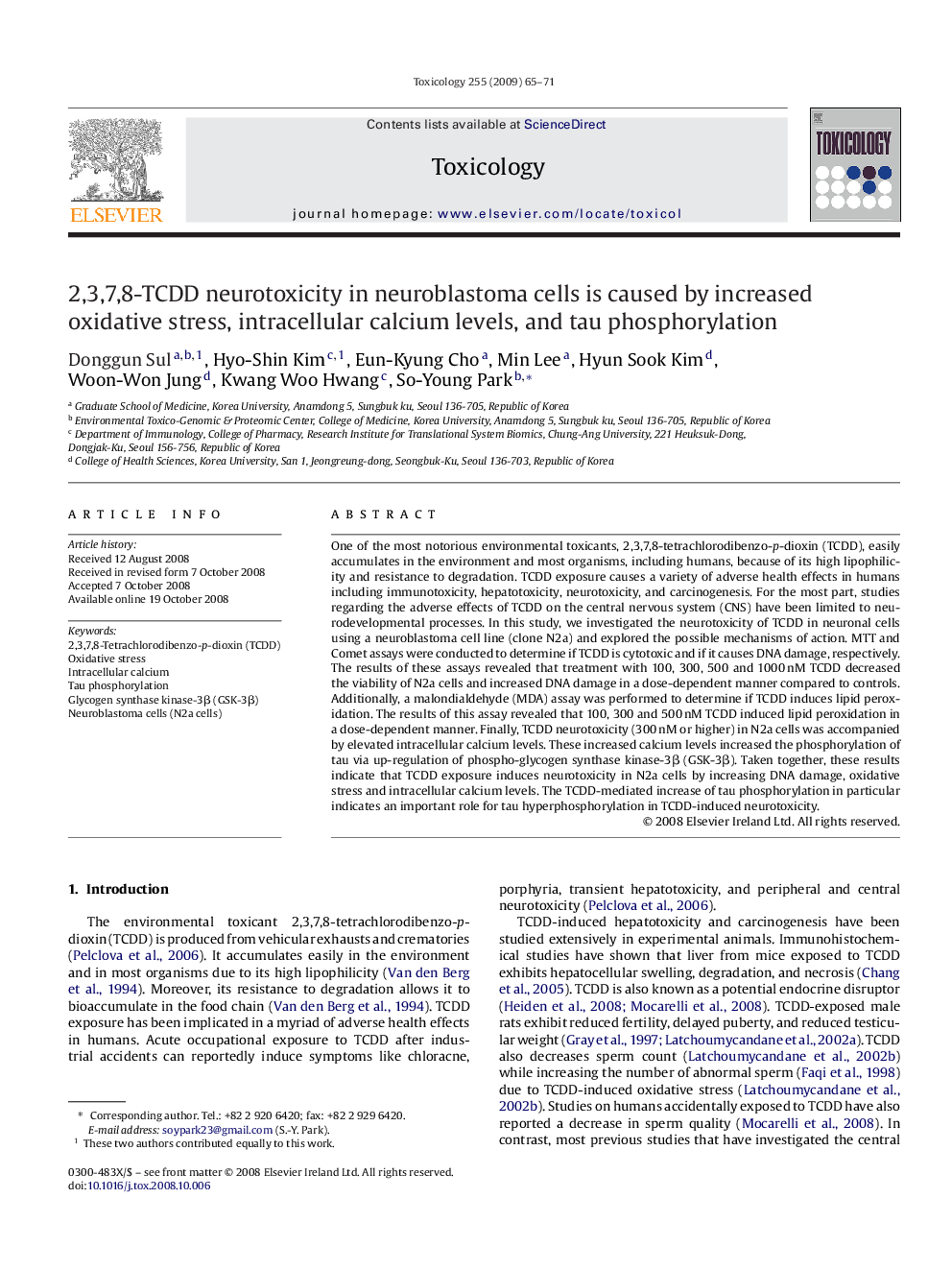| Article ID | Journal | Published Year | Pages | File Type |
|---|---|---|---|---|
| 2596929 | Toxicology | 2009 | 7 Pages |
One of the most notorious environmental toxicants, 2,3,7,8-tetrachlorodibenzo-p-dioxin (TCDD), easily accumulates in the environment and most organisms, including humans, because of its high lipophilicity and resistance to degradation. TCDD exposure causes a variety of adverse health effects in humans including immunotoxicity, hepatotoxicity, neurotoxicity, and carcinogenesis. For the most part, studies regarding the adverse effects of TCDD on the central nervous system (CNS) have been limited to neurodevelopmental processes. In this study, we investigated the neurotoxicity of TCDD in neuronal cells using a neuroblastoma cell line (clone N2a) and explored the possible mechanisms of action. MTT and Comet assays were conducted to determine if TCDD is cytotoxic and if it causes DNA damage, respectively. The results of these assays revealed that treatment with 100, 300, 500 and 1000 nM TCDD decreased the viability of N2a cells and increased DNA damage in a dose-dependent manner compared to controls. Additionally, a malondialdehyde (MDA) assay was performed to determine if TCDD induces lipid peroxidation. The results of this assay revealed that 100, 300 and 500 nM TCDD induced lipid peroxidation in a dose-dependent manner. Finally, TCDD neurotoxicity (300 nM or higher) in N2a cells was accompanied by elevated intracellular calcium levels. These increased calcium levels increased the phosphorylation of tau via up-regulation of phospho-glycogen synthase kinase-3β (GSK-3β). Taken together, these results indicate that TCDD exposure induces neurotoxicity in N2a cells by increasing DNA damage, oxidative stress and intracellular calcium levels. The TCDD-mediated increase of tau phosphorylation in particular indicates an important role for tau hyperphosphorylation in TCDD-induced neurotoxicity.
